
We all know why most psychiatry practices struggle with marketing; it feels weird to “sell” mental health care. But here’s the thing: if you are a good psychiatrist who actually cares about patients, your biggest healthcare marketing problem isn’t convincing people you’re competent. It’s helping the right people find you when they need you most. […]
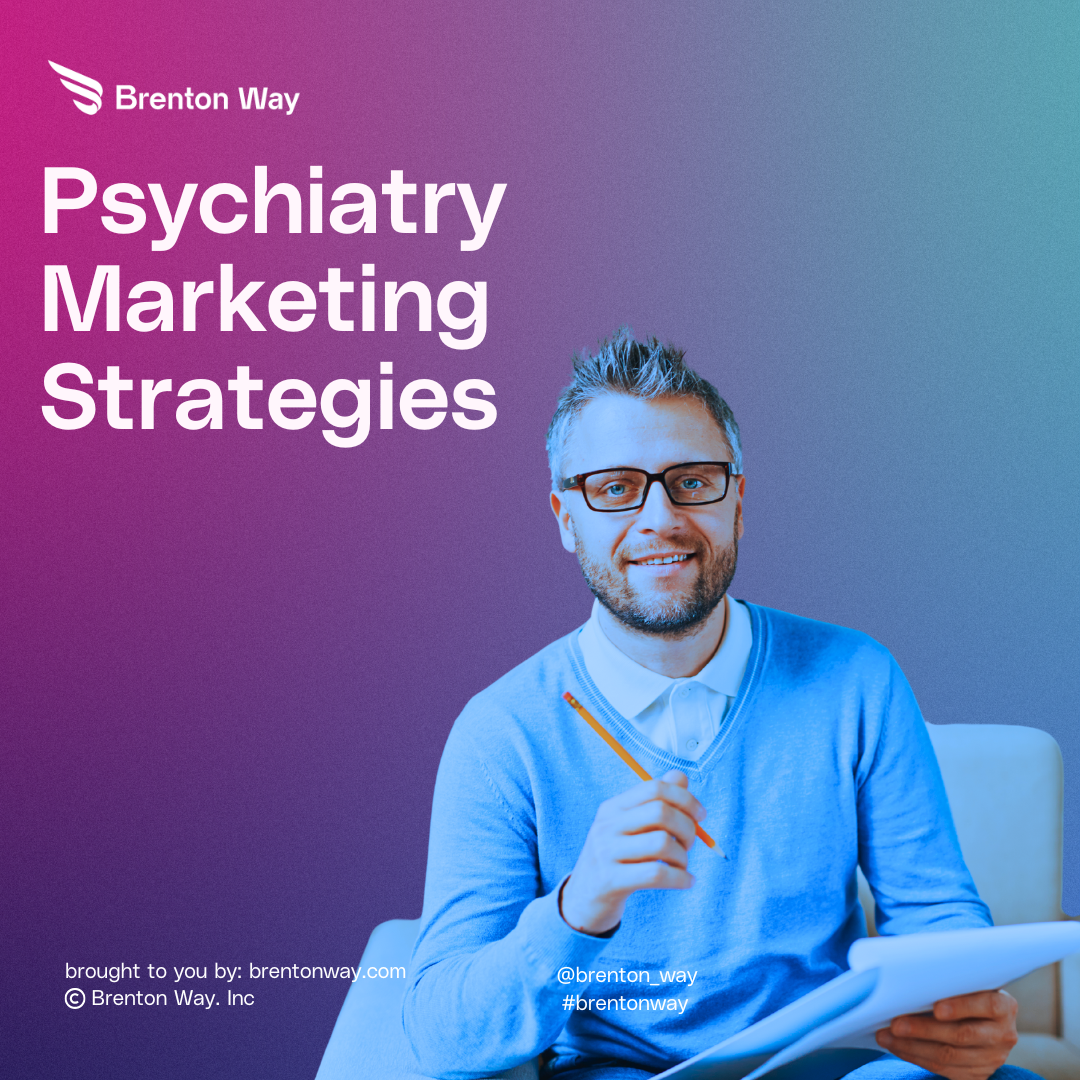
We all know why most psychiatry practices struggle with marketing; it feels weird to “sell” mental health care. But here’s the thing: if you are a good psychiatrist who actually cares about patients, your biggest healthcare marketing problem isn’t convincing people you’re competent. It’s helping the right people find you when they need you most.
I’ve watched too many excellent psychiatrists sitting in empty offices while patients across town wait four months for appointments with providers who barely look up from their prescription pads. That’s not a supply problem, that’s a connection problem.
So before we talk about SEO or Google Ads, let’s figure out what makes your practice different. And I don’t mean “we provide excellent, evidence-based care.” Everyone says that. I mean, what would your favorite patient tell their friend about why they should see you specifically?
Maybe you are the psychiatrist who actually explains what medications do and why. Maybe you are the one who doesn’t make people feel broken for needing help. Maybe you have figured out how to make ADHD evaluations feel less like an interrogation and more like finally getting answers.
Whatever it is, that’s your starting point.
A lot of psychiatry websites sound like they were written by lawyers for insurance companies. “Our board-certified practitioners provide evidence-based treatment modalities utilizing measurement-based care protocols.”
Cool. Now say it like you’re talking to your neighbor over coffee.
Try this instead: “We are psychiatrists who believe you shouldn’t have to wait three months when you are struggling. We actually listen to how medications make you feel, and if something isn’t working, we figure out what will.”
The difference? The second version tells someone what their life will be like if they choose you. The first version tells them you went to medical school.
Here are some translations that might help:
Here’s something I have learned watching psychiatry practices grow (or stall): potential patients don’t wake up wondering whether you’re “cash-pay” or “insurance-based.” They wake up wondering, “Can I actually get an appointment? Will this person listen to me? Am I going to feel rushed or judged?”
Your business model matters, but primarily because of what it signals to potential clients:
The same goes for telepsychiatry vs. in-person. Telehealth can be life-changing for parents juggling childcare or for someone living in a rural town with no specialists.
However, in-person interactions still matter to people who feel more comfortable being in the same room. Patients don’t want to decode your model; they just want to know, “Will this actually work for me and my life?”
Too many psychiatrists try to be everything to everyone. The truth? People are desperate for someone who really “gets” their specific struggle.
If you’re the psychiatrist who helps college students finally figure out their ADHD, say that.

If you’re the person OB-GYNs trust with perinatal patients, own that. If you’ve invested in TMS or esketamine for people who feel like nothing has ever worked, make that your flag in the ground.
Specificity builds trust. “We treat all psychiatric conditions” is wallpaper. But “We help adults who’ve tried three medications and still feel stuck” makes someone reading your website sit up straighter and think, “That’s me.”
The biggest marketing opportunities in psychiatry aren’t flashy. They are the things patients complain about over and over again:

The fancy term for this is your unique value proposition. In plain language, it’s the answer to: why you, not the psychiatrist down the street?
Think of what your best patient would tell their friend about you:
That’s your marketing gold. That’s what needs to be on your website and in your ads, not “multidisciplinary, measurement-based modalities.”
Two ways you could phrase it:
It’s not about selling. It’s about putting words to what you’re already doing differently.
Marketing a psychiatry practice isn’t like marketing a coffee shop. The stakes are higher, the rules are stricter, and honestly, the margin for error is smaller. One sloppy email campaign or a too-promising ad can land you in hot water with regulators, boards, or worse: patients who feel misled.
Here’s how to keep your marketing effective and ethical:
Everyone knows HIPAA applies in the exam room. But it also applies in marketing. The big mistake I see? Psychiatrists using tools that weren’t built for healthcare marketing.
And please, don’t let staff text patients from their personal phones or email them through Gmail. It’s not just risky; it’s unprofessional.
Patients are vulnerable when they’re looking for psychiatric care. That means your words matter.
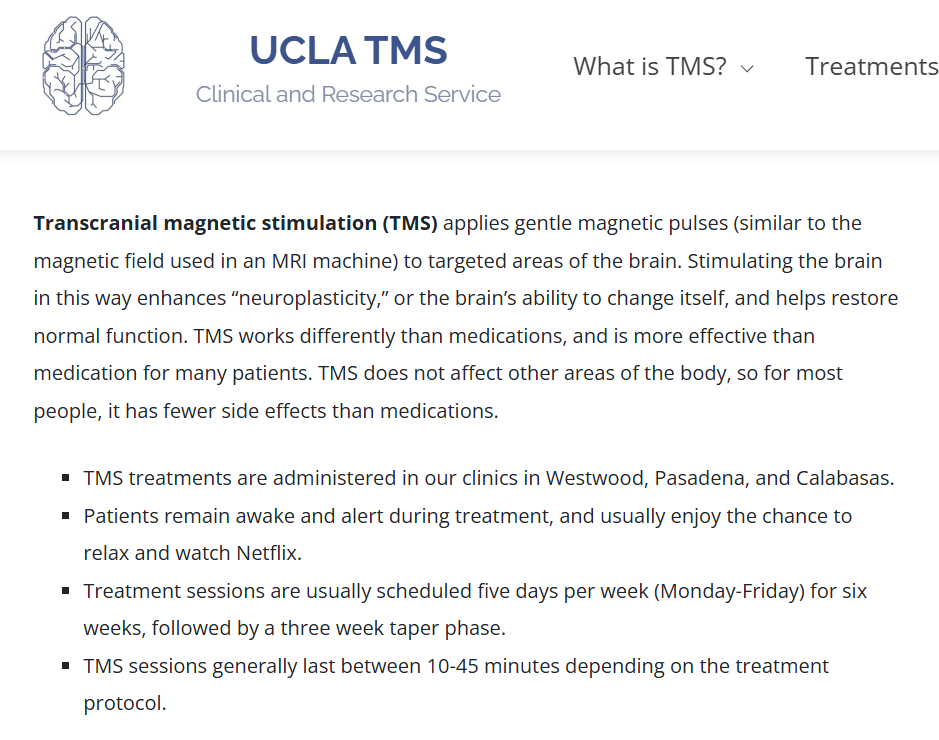
It may sound cautious, but it actually builds trust. Patients don’t want a miracle promise; they want honesty.
This one’s a minefield. A glowing patient email might make you want to post it on your site, but here’s what you need to remember:
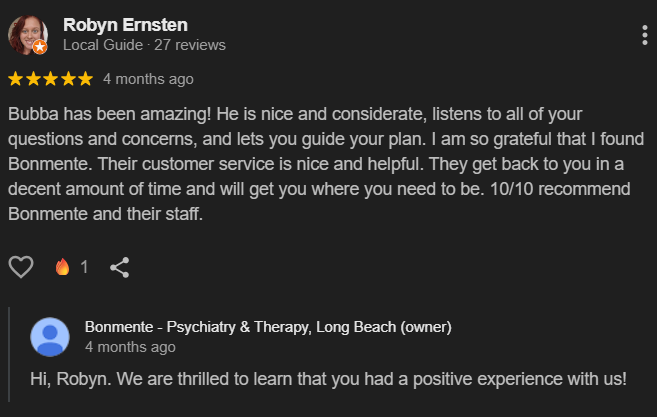
The safest path? Make it easy for patients to leave online reviews on Google, Healthgrades, or Zocdoc, but don’t pressure them.
Meta (Facebook/Instagram), Google, and YouTube have their own restrictions around sensitive health topics. A few things to remember:
Instead, lead with education: “Here’s what TMS is and how it works,” not “Here’s why you need TMS now.”
Two big ones that get overlooked:
The bottom line? Ethical marketing isn’t about playing small. It’s about building trust. When patients see you are careful with words, careful with data, and cautious with promises, they are more likely to believe you’ll be careful with their care too.
Here’s the mistake a lot of psychiatrists make: they think “patients” is one big group. It’s not. Different people find you in different ways, and what they care about isn’t always the same.
Think about the conditions and life stages where people are actually Googling for help:
Each of those people (or their caregivers) will land on your site with different fears and questions. The more you can speak to those moments, the more likely they’ll see you as “my psychiatrist” instead of just “a psychiatrist.”
PCPs, OB-GYNs, therapists, and school counselors; these people are desperate for reliable partners. They don’t need your whole CV. They need to know three things:
If you can make that clear, you’ll quickly become their go-to.
Hospitals, IOP/PHP programs, and even employers are not looking for a billboard psychiatrist. They want someone who can take patients off their plate and keep them safe. They care about your processes: intake speed, follow-up, and whether you track outcomes.
This one is simple: if you’re in-network, say it. If you’re out-of-network, don’t dance around it; be transparent, explain your superbill process, and give people confidence about the costs.
Most people don’t think, “I’d like to schedule a full psychiatric evaluation today.” They are nervous and uncertain, and often put this off because it feels big and scary. Your job is to lower that first step until it feels manageable.
Instead of “Book a 90-minute intake now,” try:
Sometimes, that’s all it takes to help someone cross the line from “thinking about it” to “actually scheduling.”
If you say you’ll see people fast, actually mean it. If your website says “appointments within 10 days,” you need to back it up with evening telehealth slots, cancellation alerts, or a waitlist system. Nothing kills trust faster than making access the core of your pitch and then not delivering.
Most patients don’t know what “medication management” means, but they do understand a clearly named pathway.
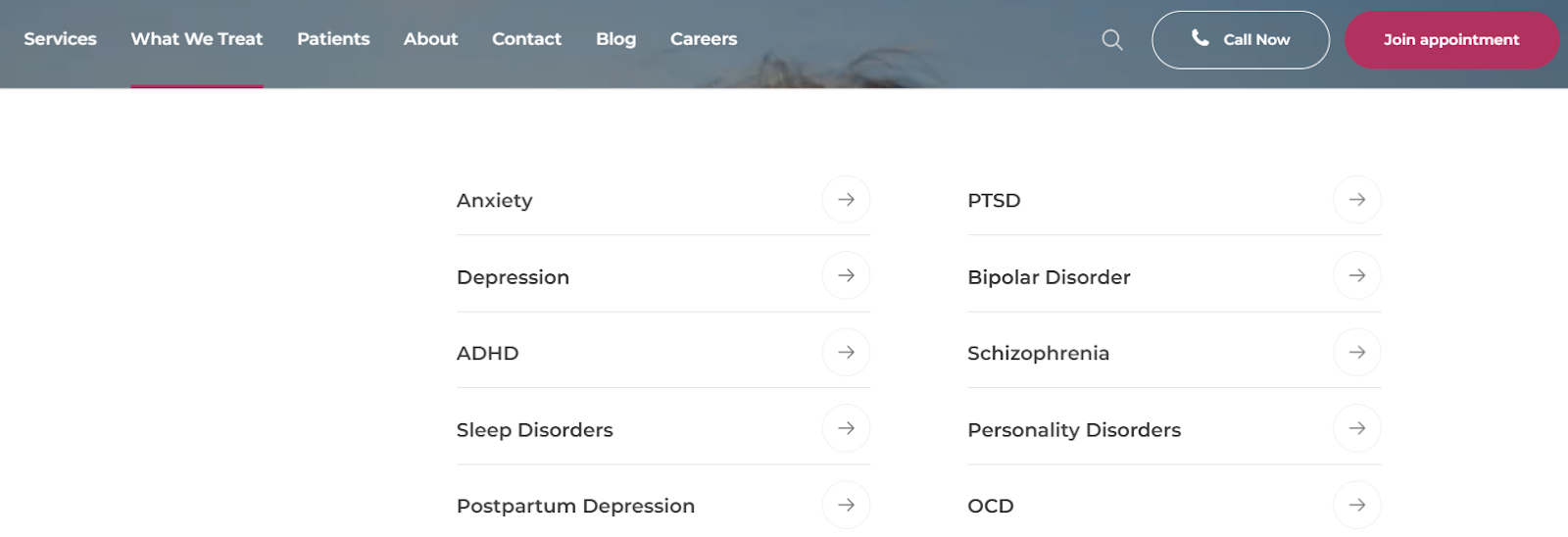
For example:
When you package things like this, it feels like a genuine service tailored to them, not just “psychiatry, generally.”
The little stuff matters:
Every time you make it easier, you reduce the number of people who give up before they even start.
Many psychiatry websites sound like they were written by a medical lawyer. “Our board-certified clinicians provide evidence-based treatment modalities utilizing measurement-based care protocols.”
Technically true, but here’s the problem: no anxious mom at 2 a.m. reads that and thinks, “Finally, someone who gets me.”
Your brand voice should feel like the exact opposite of that. Calm. Clear. Human. Something that makes a stressed-out patient feel safe enough to hit “Book Now.”
Think of your brand voice like how you talk to a new patient in your office:
Instead of listing credentials in a wall of text, show the things that actually matter to patients:
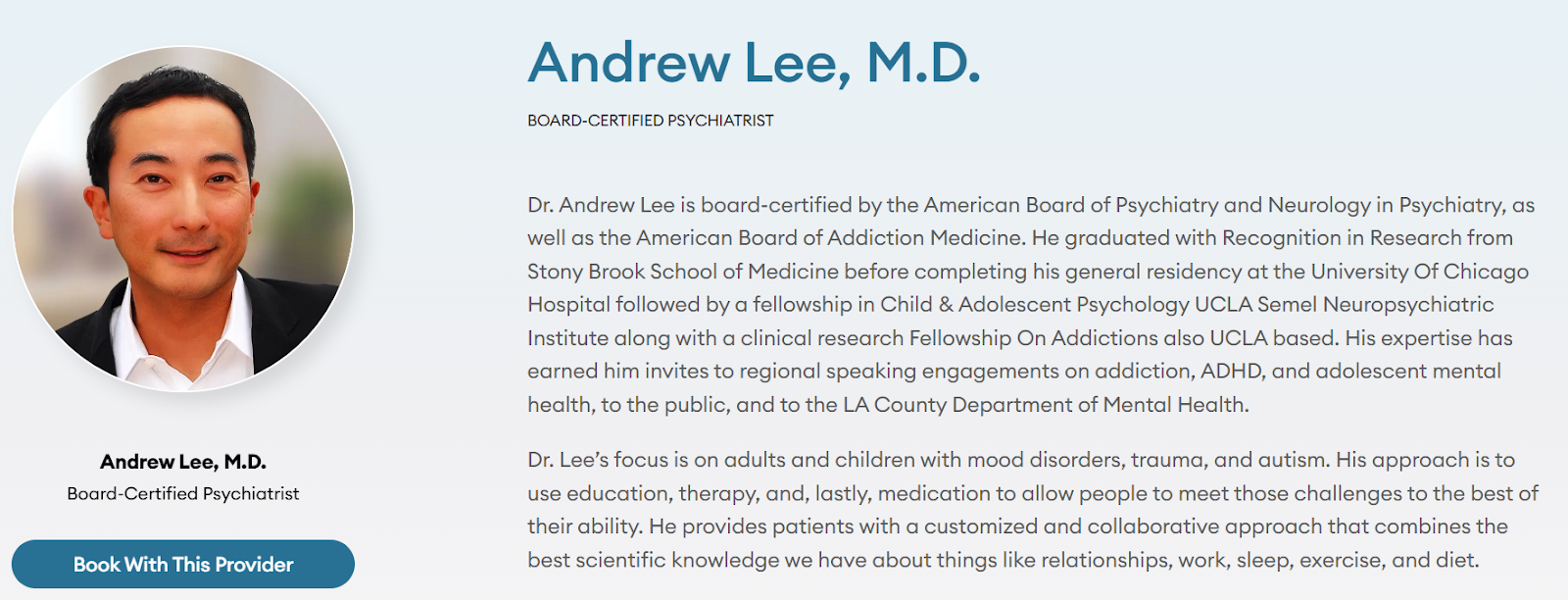
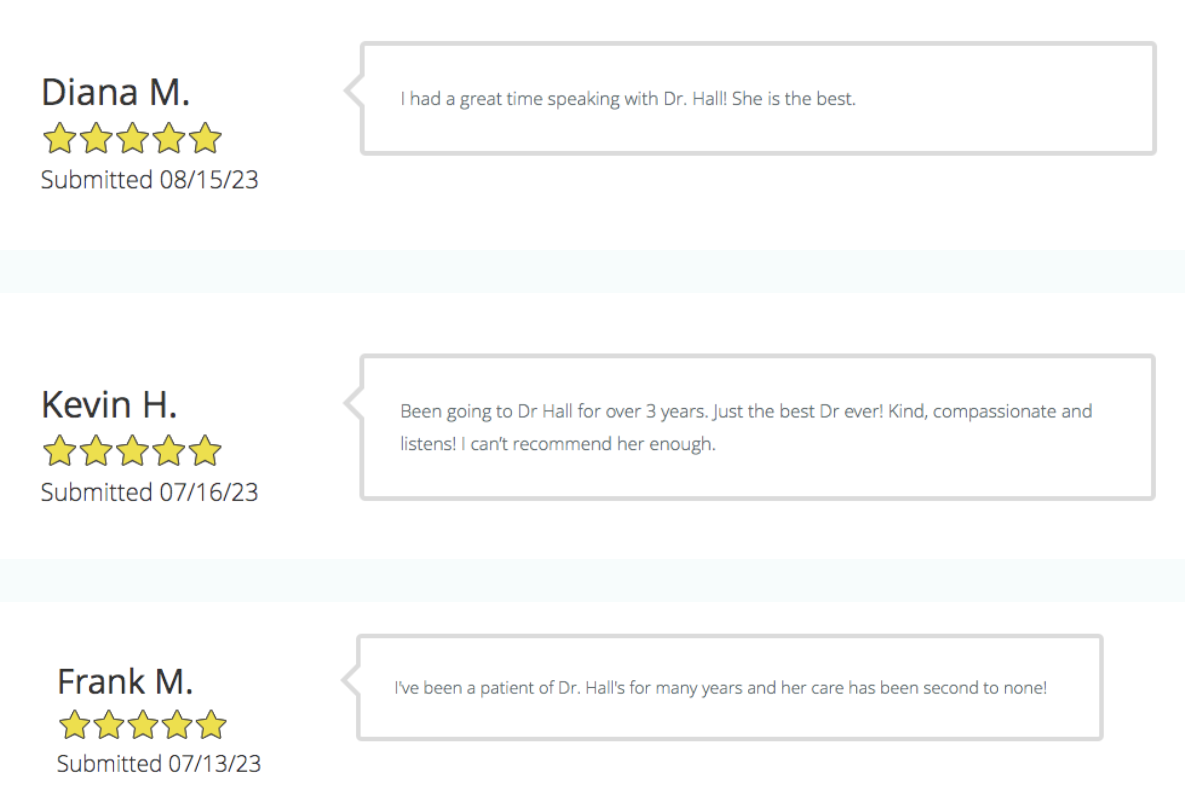
Don’t bury the fine print; make it part of your honesty. Patients respect transparency.
When you’re upfront about your limits, you actually come across as more trustworthy.
Your website is the first appointment most people ever have with you; they just don’t call it that. If it feels confusing, dated, or overwhelming, they’ll click away before you even know they were there.
What matters most isn’t fancy design; it’s clarity. A patient should be able to answer three questions within 10 seconds of landing on your site:
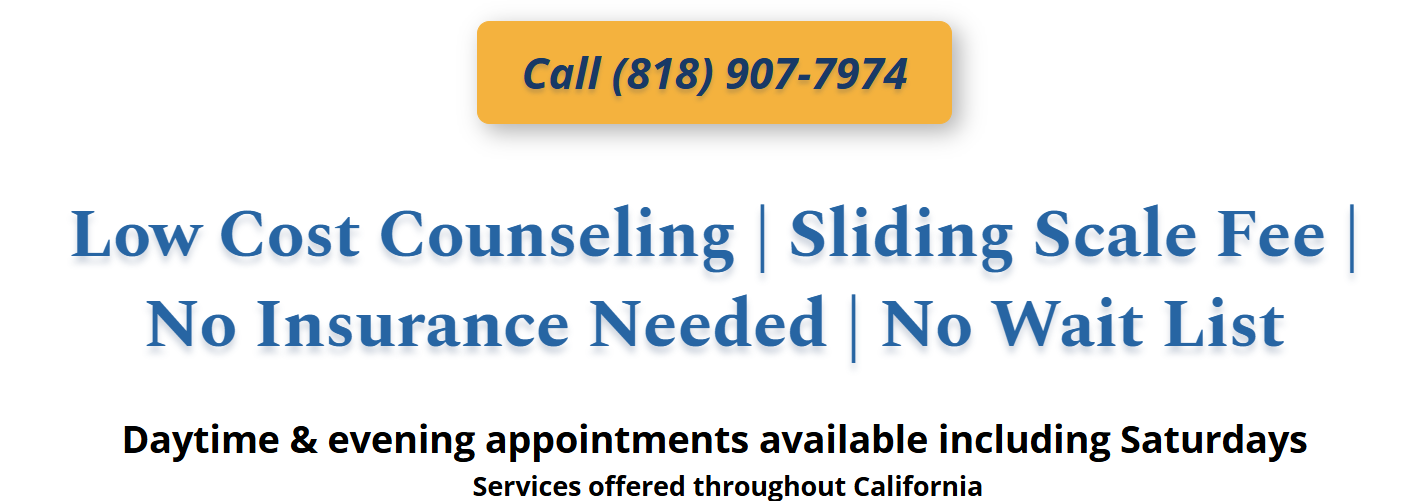
That’s it. If those answers aren’t obvious, nothing else you add will matter.
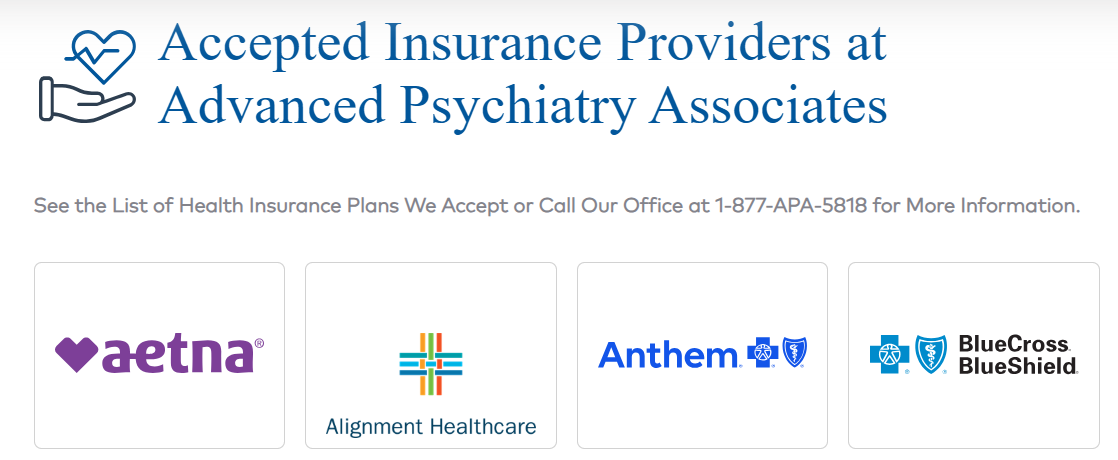
Think of it this way: your site should feel like the waiting room you wish you had, calm, uncluttered, and reassuring.
Most people don’t search “psychiatrist near me” weeks in advance. They Google it at 11 p.m. after another night of not sleeping, or on their lunch break after their therapist finally said, “Maybe it’s time to consider medication.”
If you don’t show up in those searches, you don’t exist.
Google cares most about three things for local search:
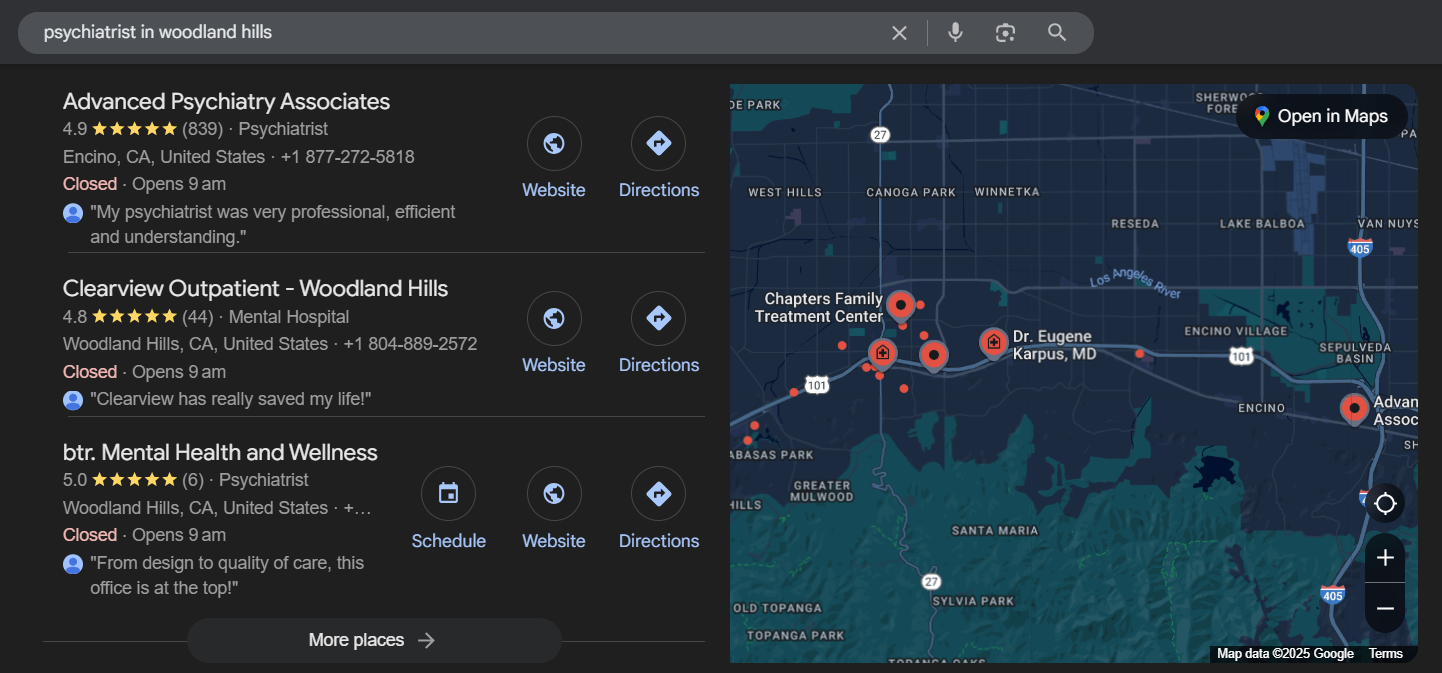
Start here: make sure your name, address, phone, and hours are precisely the same everywhere online. Inconsistencies tank trust and rankings.
Don’t bury everything under “Services.” Create specific, plain-titled pages:



Each page should explain what it is, who it’s for, what to expect, and how to get started. No jargon, no keyword stuffing, just clear explanations.
Blogging isn’t about volume. It’s about answering the questions people are actually asking Google:

When you write those answers in a way that sounds human, not like a textbook, you’ll show up more often and build trust before anyone ever calls you.
For psychiatry, your Google My Business Profile (the box that shows up on the right side of search results or in Google Maps) is often the first thing people see, not your website.
If it looks empty or outdated, people assume the same about your practice.
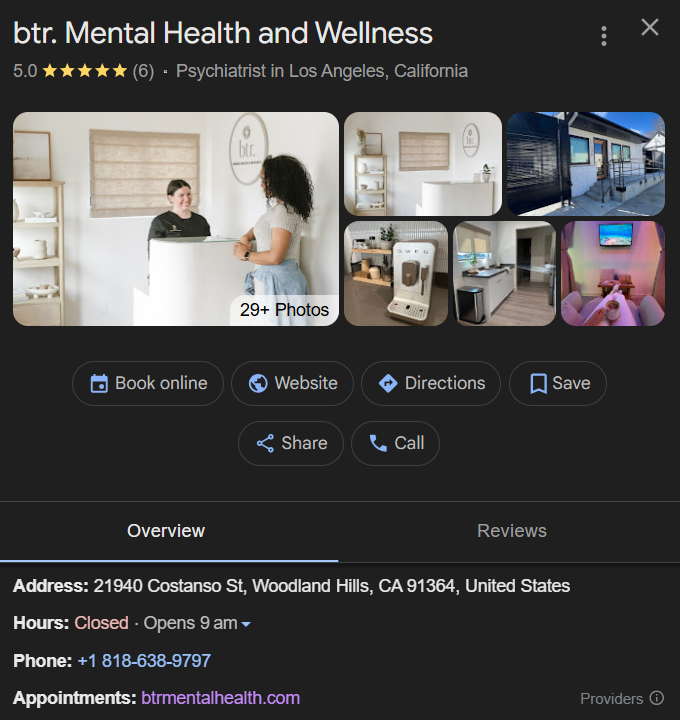
Most patients read reviews before clicking your site. A handful of honest, specific reviews matter more than 200 generic ones. Encourage happy patients to leave feedback, but never pressure them to do so.
Even a single line like “Dr. X actually listened to me” carries more weight than anything you write yourself.
And don’t panic about the occasional negative review. A calm, professional response (“We’re sorry to hear this, please call our office so we can address it directly”) shows you care.
Google lets you post short updates to your profile. Use them. Share things like:
It shows you’re active, responsive, and available.
Psychiatry is deeply personal. Patients don’t just want to know that you’re qualified; they want proof that people like them felt safe, heard, and helped. That’s where reviews come in.
A negative review stings, but it’s not the end of the world. What matters is how you respond.
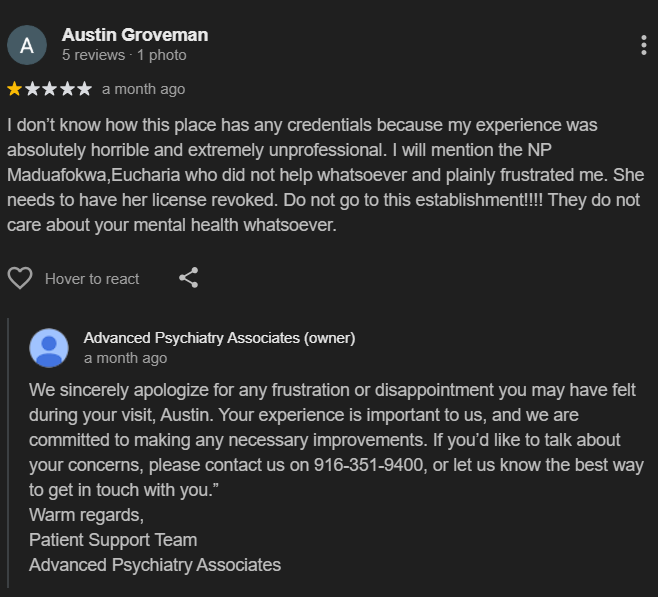
A few less-than-perfect reviews can actually make your profile look more real. Patients know no one is perfect.
Google isn’t the only place patients search. Insurance directories, Healthgrades, Psychology Today, Zocdoc, these can all be entry points.
The key: consistency.
Being present and accurate across multiple platforms increases both trust and visibility.
Medical SEO and directories help over time. But sometimes, you need to show up right now, and that’s where paid ads come in.
Think about the parent searching “child psychiatrist near me” after a rough week at school, or the young professional Googling “psychiatrist for anxiety telehealth” between meetings. If your ad appears at the top, you’re the lifeline they see first.


Social ads aren’t about catching people mid-crisis; they are about awareness.
Start small. Test keywords and audiences. See which ones bring real calls or bookings, then scale those. Don’t dump thousands into broad campaigns without tracking results.
The goal isn’t just clicks. It’s real patients showing up for real care.
Psychiatry is a field where trust is everything. Patients are often anxious, overwhelmed, or skeptical when they first start looking for help. Content, when written with clarity and care, builds that bridge before they ever pick up the phone.
Forget cranking out generic “mental health tips” lists. Instead, focus on the exact questions people are typing into Google late at night:
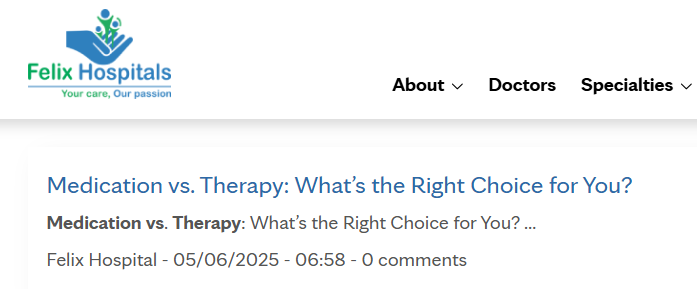
When you answer these questions in plain language, you do two things at once: help someone feel less alone and show up higher in search.
For many, video feels more personal than text. A quick, two-minute clip of you explaining what the first appointment looks like can calm a lot of nerves.
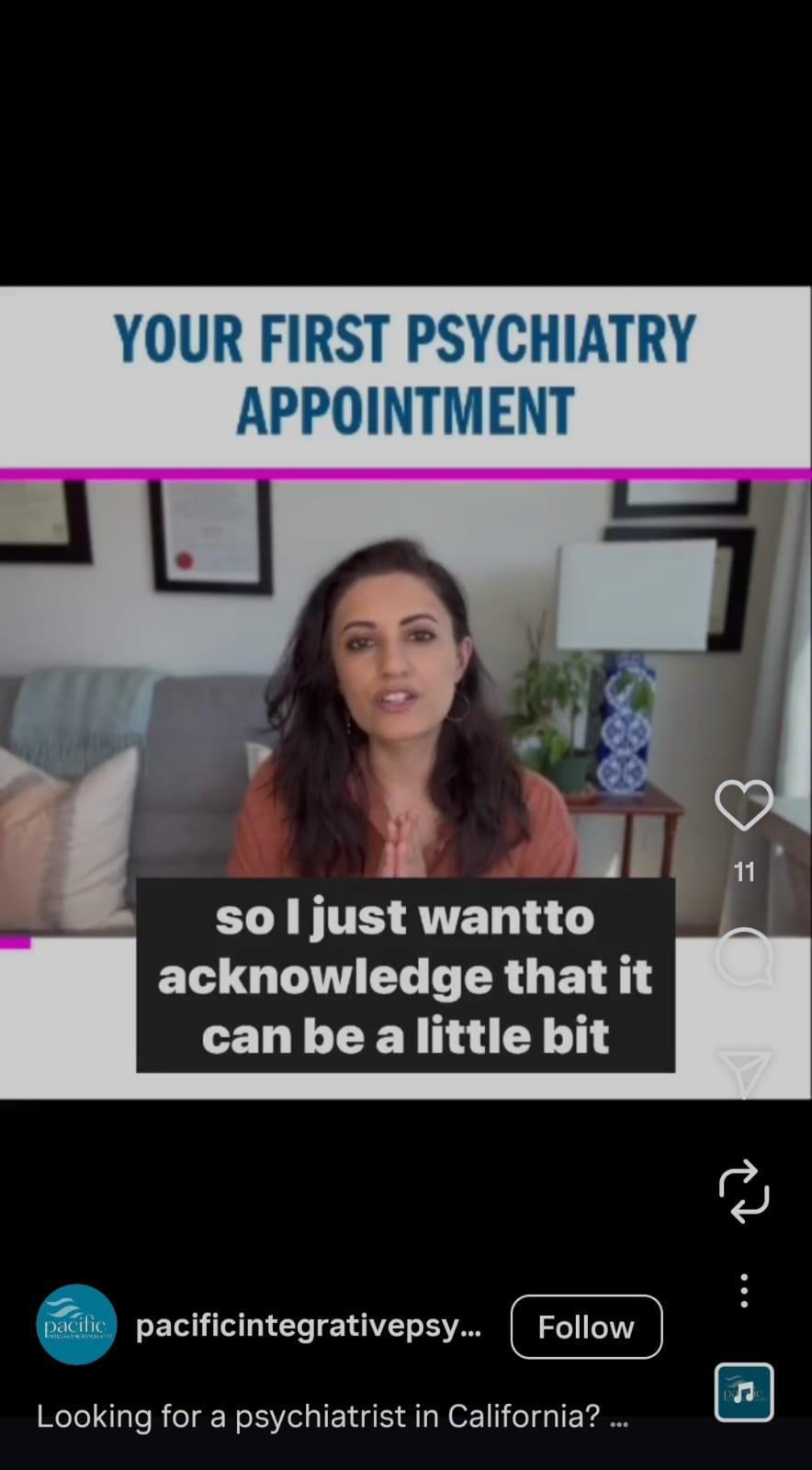
This is where psychiatrists can stand apart. White papers, podcast interviews, and guest articles in local media aren’t just marketing; they are credibility builders. Patients and referral partners alike pay attention.
You don’t need to post daily. What matters is showing up regularly. A new blog post once a month, and a short video every few weeks, is enough to remind people that you’re active, engaged, and available.
Psychiatry isn’t always the easiest field to talk about publicly. People may hesitate to “like” or “share” a psychiatrist’s page out of privacy concerns. That doesn’t mean healthcare social media marketing isn’t worth your time; it just means you have to approach it with empathy and intent.
Your role on social isn’t to go viral. It’s to create a presence that feels approachable and trustworthy. Posts that work well include:

Not everything happens online. Community presence also means:
These small, offline touches reinforce your online reputation and show you’re more than just a name on a search result.
Every post should sound like a supportive human, not a sales pitch. A simple “We know this time of year can be tough, here are a few ways to take care of your mental health” goes further than pushing appointments directly.
For psychiatry practices, email isn’t about flashy promotions or sales funnels. It’s about gentle reminders, useful updates, and staying connected with people who already trust you, whether they are current patients, past patients, or even referrals who may reach out down the line.
You don’t need to send weekly blasts. Monthly or quarterly updates are plenty. Patients will appreciate hearing from you without feeling overwhelmed.
And always respect privacy. Avoid subject lines that are too revealing (like “Your depression treatment plan”), and keep content professional but warm.
Marketing without tracking is like prescribing without follow-up; you don’t know what’s working, what’s not, or if things need to be adjusted. In psychiatry, where budgets are typically tight and time is limited, every dollar counts.
Unlike retail or e-commerce, you’re not chasing thousands of clicks. You only need a steady flow of the right patients. Analytics helps you see whether your efforts are bringing in those patients or just noise.
The point isn’t to obsess over numbers. It’s to make sure your marketing is leading to real, measurable outcomes: new patients, steady growth, and fewer wasted dollars.


